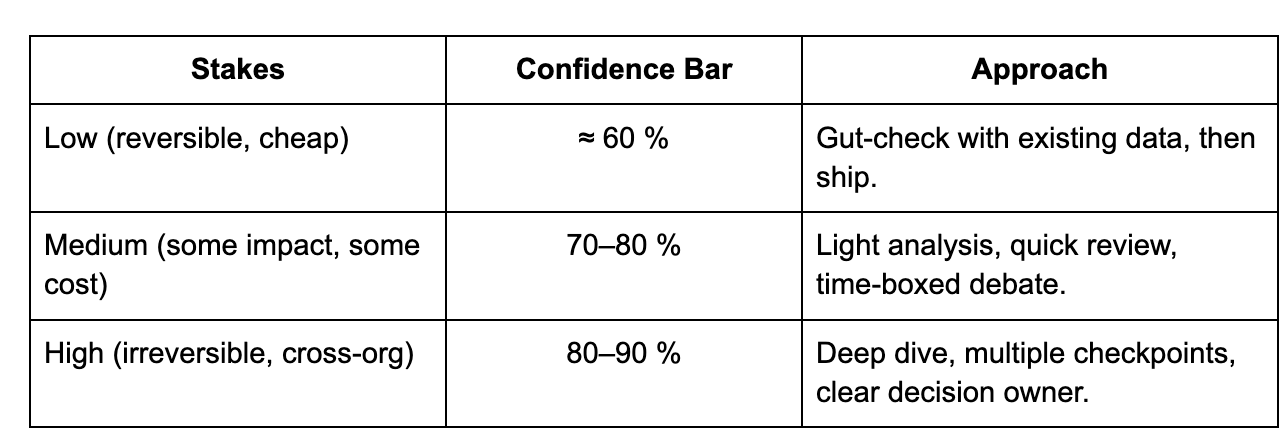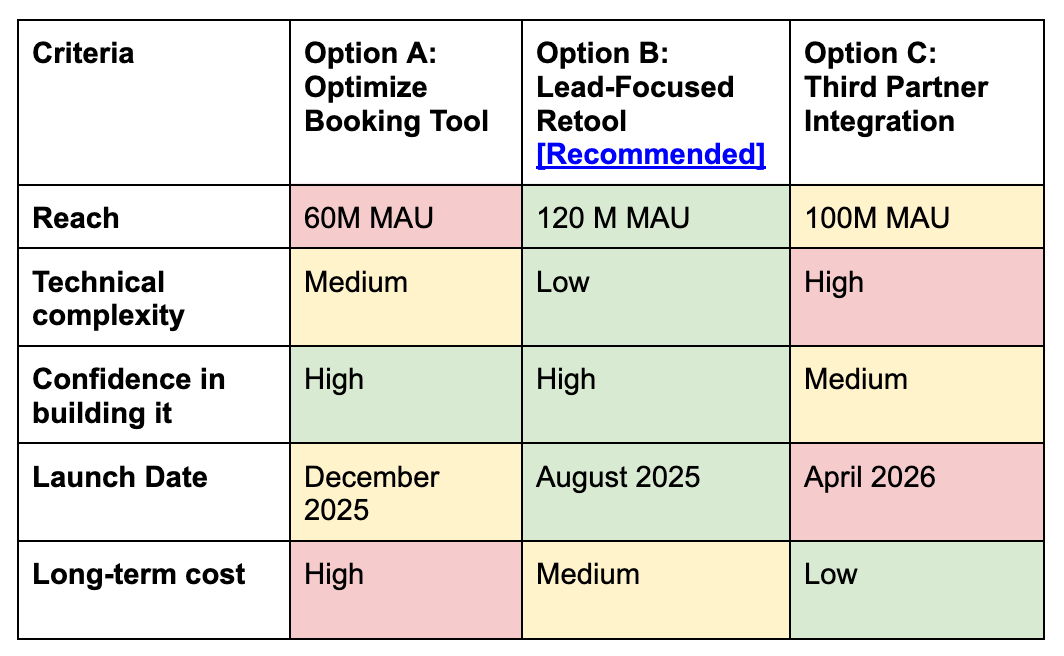Making Decisions: A PM’s Guide to Getting It Right
Product management is a career built on decisions—when to launch, when to cut scope, where to invest, and what to shut down. The job gets hardest when the stakes are high and the path is murky (which is most of the time). Great PMs aren’t just great builders; they’re great deciders who can move teams forward without perfect information.
Below is a decision-making playbook you can reuse for anything from “Should we tweak copy?” to “Should we spin up an entirely new product line?”
1. Calibrate Effort to Importance
The goal isn’t 100 % certainty—it’s momentum with acceptable risk.
2. Map the Option Space: Frame → Expand → Distill
The toughest part of any decision is defining the right set of options. Skip this and you either miss the winning idea or drown in analysis. Use this three-step loop:
Frame – Draft a rough problem statement and two or three straw-man options yourself.
Expand – Pull in thought partners, criteria, and every messy fact until no new surprises surface.
Distill – Collapse everything back to three or four viable choices, each scored in a “traffic-light” table.
2.1 Frame
Write the first skeletal doc yourself (goals, constraints, 2–3 options).
Circulate to a small core of thought partners for fast feedback.
Avoid the empty template trap—show up with a rough draft, not by asking everyone else to fill in the blanks.
2.2 Expand
Unearth everything that could bite you later:
Start with criteria. Articulate the outcomes that matter before naming solutions.
Qualitative inputs. User research, customer interviews, competitive scans.
Quantitative inputs. Experiments, logs, benchmarks.
Risk canvas. What could sink us, and how would we mitigate?
Close gaps. Design experiments or prototypes to answer open questions.
You’re done expanding when feedback shifts from “Have you considered…?” to “Given this data, I lean X.”
2.3 Distill
With the full mess in view, prune ruthlessly:
Re-frame with your instincts. How would you explain the choice to a new hire?
Sequence decisions. Handle the key question first, break any complex spin-offs into smaller parts, and postpone anything that isn’t urgent.
Spot one-way doors. Prioritize what can’t be undone.
Skip throwaway options. If an option is obviously bad, park it in the appendix.
Example traffic-light snapshot
Recommendation: Option B—max reach, low complexity, easier to build, quick to market
3. Drive to a Decision
Right-size the room. Only people who can change the outcome attend; everyone else gets the summary. Use frameworks like DACI to assign roles up front:
Driver – pushes the decision forward
Approver – makes the final call
Contributors – give essential input
Informed – stay in the loop afterward
Single decider/approver. Name the approver in bold at the top of the doc.
Durable outcome. Capture inputs, rationale, and revisit triggers so the call doesn’t unravel three weeks later.
4. Operationalize
Broadcast the verdict. Share what was decided, why, and next steps.
Assign Owners & ETAs. Every follow-up gets an owner and a date.
Link back. Reference the decision doc in future specs to keep context fresh.
5. Decision Hygiene Boosters
Over-communicate critical dates. Everyone should know the hard stop and the last responsible moment for changes.
Plan the change, not just the choice. Ask “What breaks Monday morning?” before pressing Go.
Track opportunity cost. If you wouldn’t start a project again today, consider killing it.
Shrink the circle. Use DACI (Driver, Approver, Contributors, Informed) to avoid decision-by-committee.
Ditch silver-bullet fantasies. Trade-offs are the norm; frameworks make them explicit.
Pre-mortems & contingencies. Stress-test your option before reality does.
Final Thought
Decisions are bets. Your leverage as a PM comes from placing enough of them to create real momentum—and from learning fast when the odds change. Use this playbook to keep the option space clear, the process tight, and the team moving even when the data’s fuzzy and the clock is ticking.




